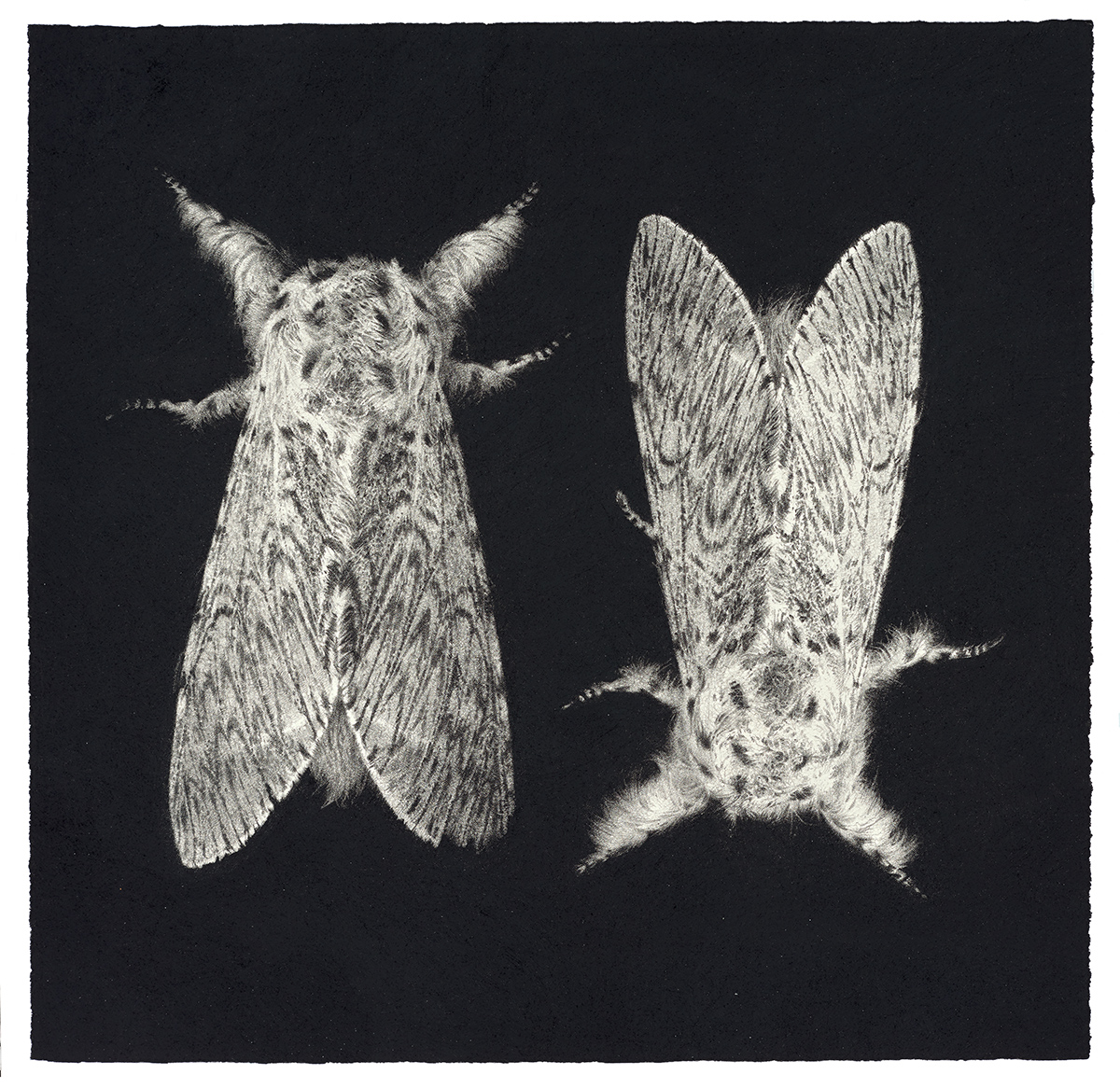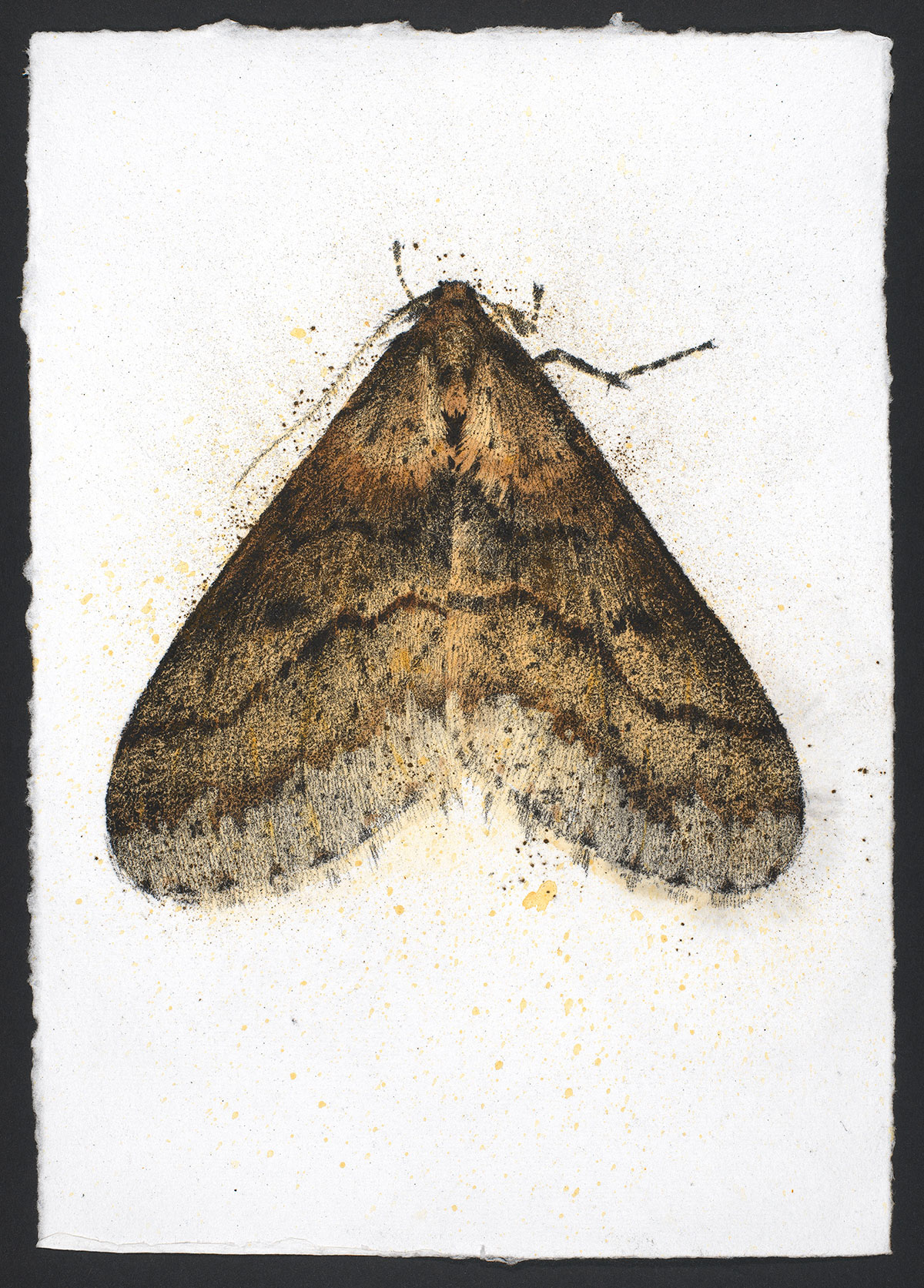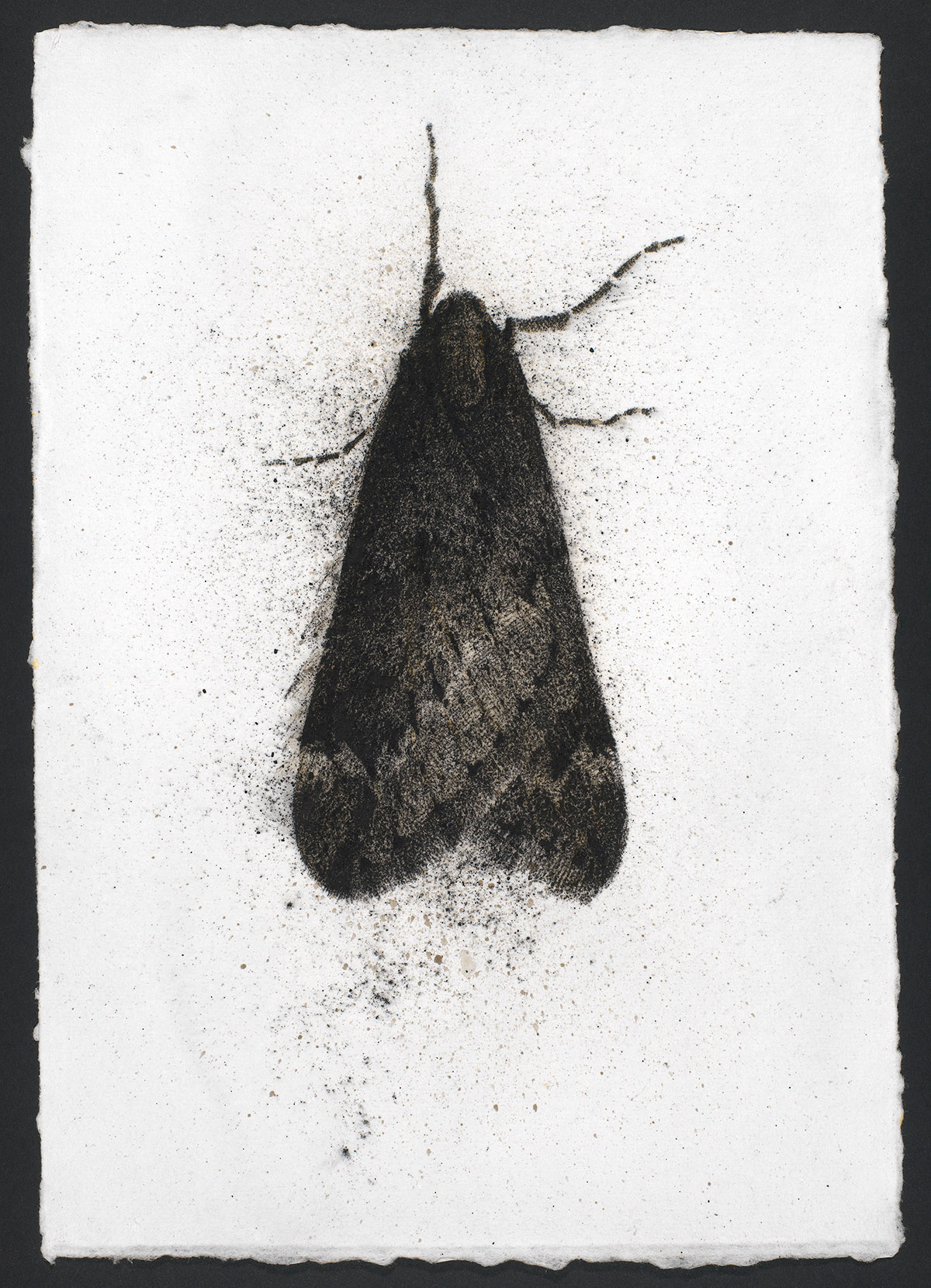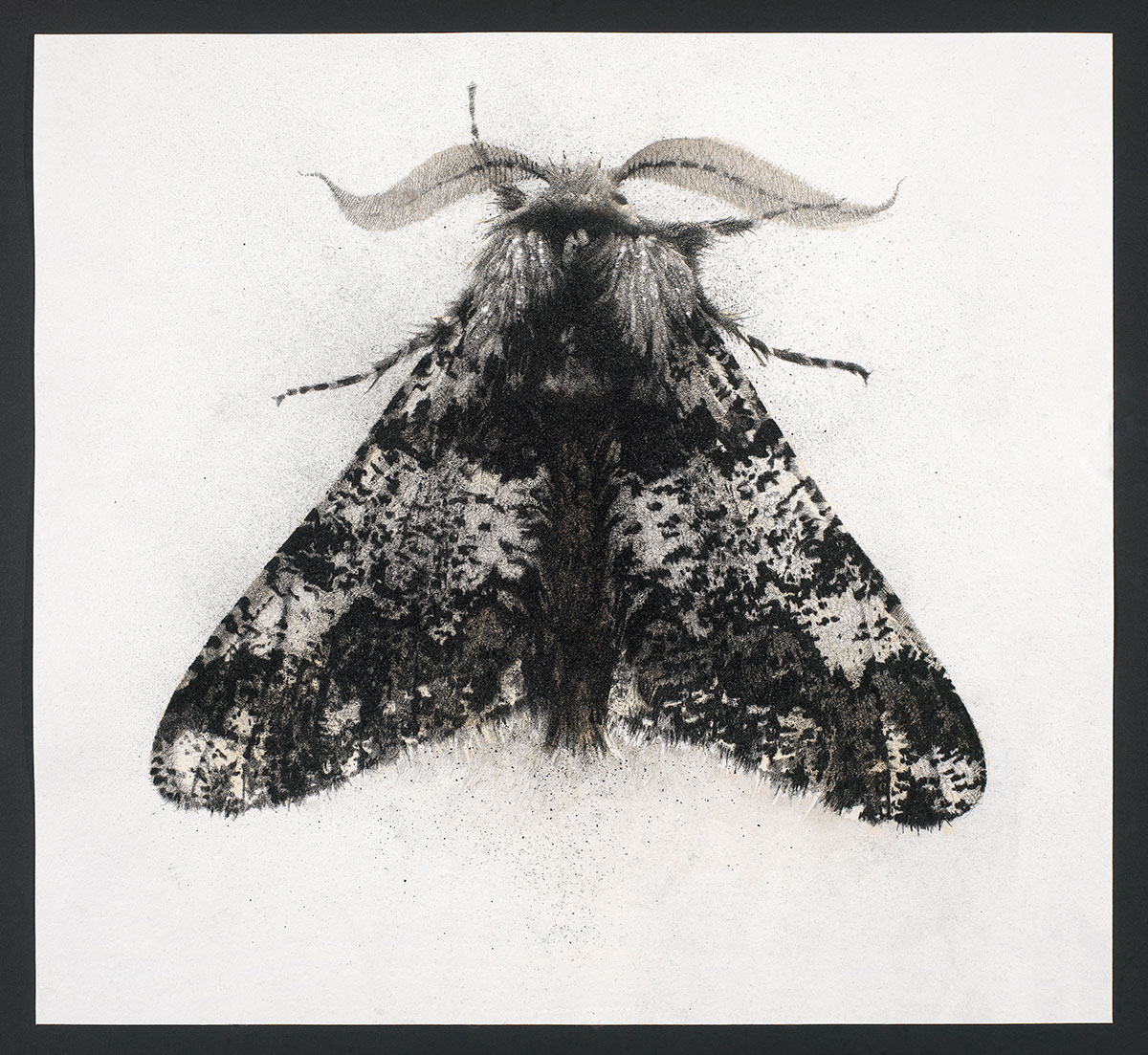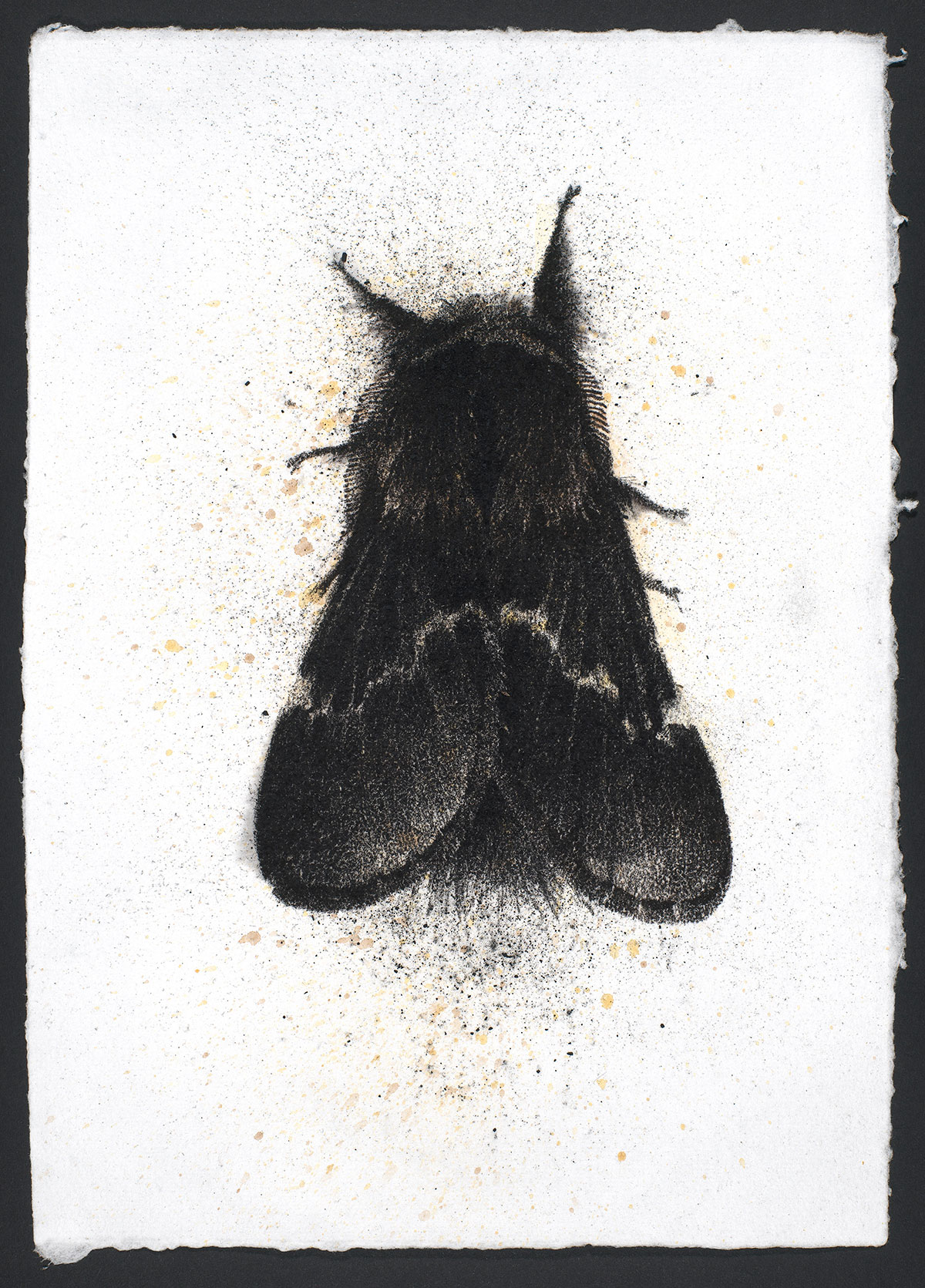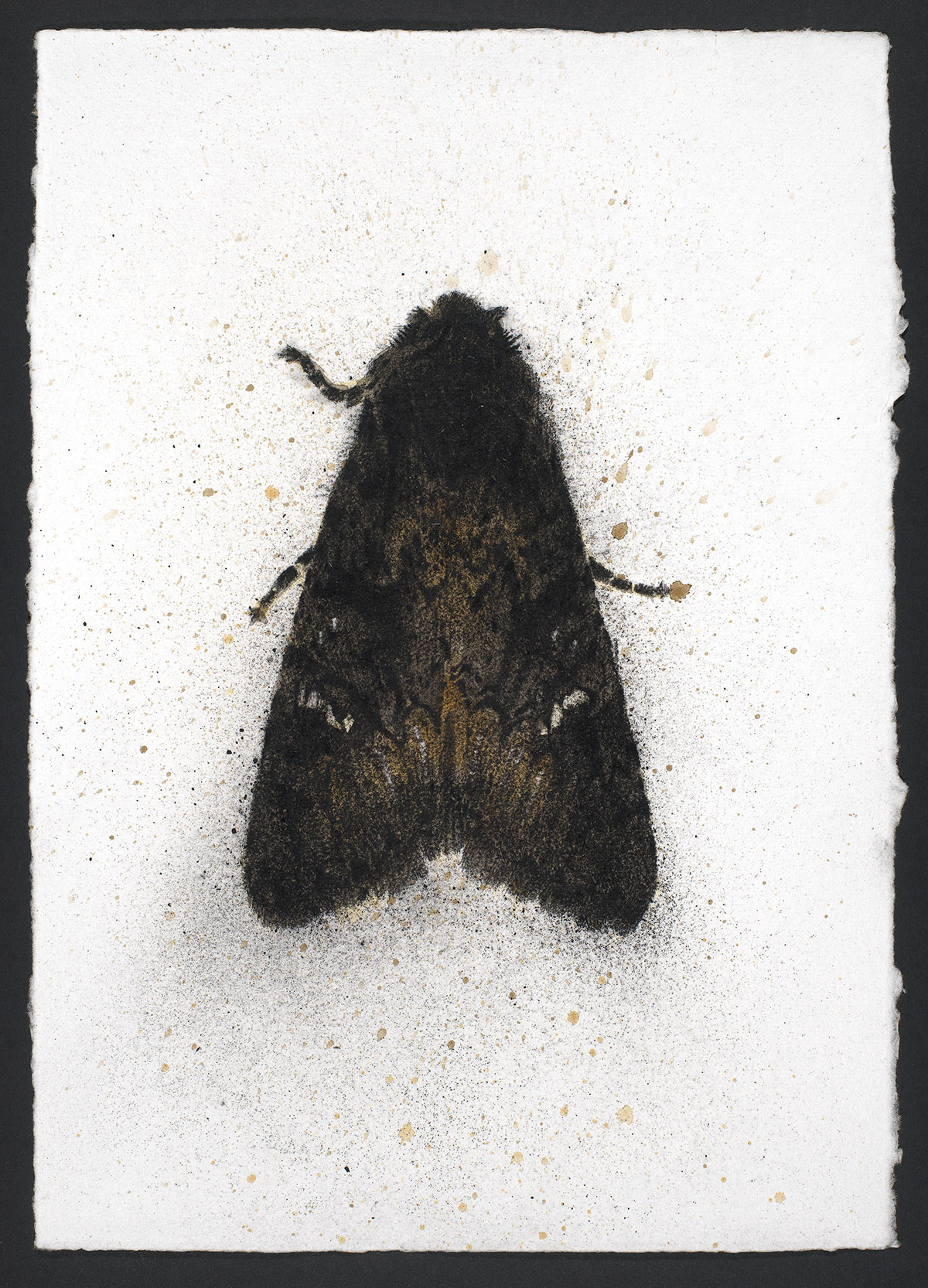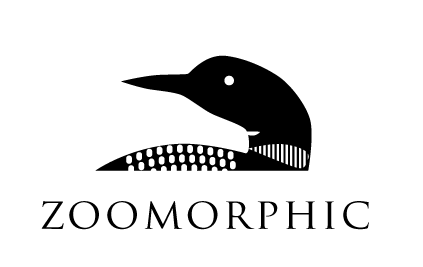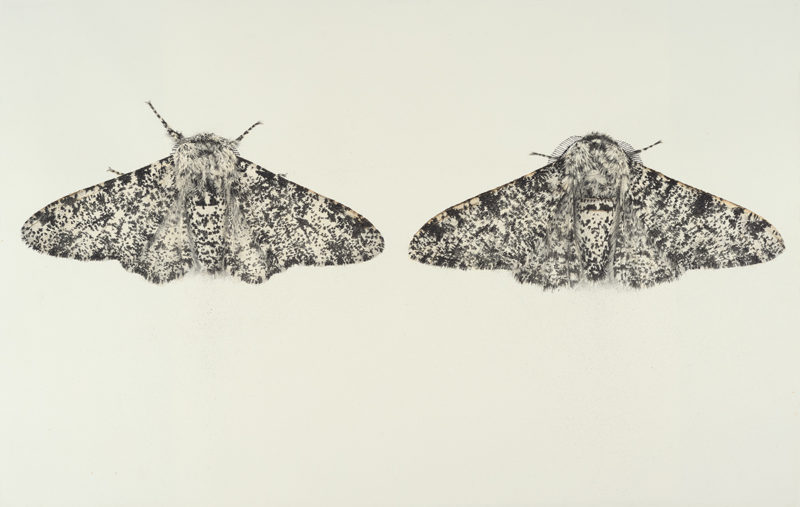Reflections on the Images of Moths
Looking at Sarah Gillespie’s drawings of moths I find myself absorbed by the complex patterning and subtle colouring on the wings, the delicate antennae and legs, the sense of a life-form both robust and fragile. I am taken aback by their beauty. I am in wonder at Sarah’s technical and aesthetic skill, while at the same time curious about how their elegant shape and remarkable markings arise in the natural world. Questions about ‘art’ and ‘nature’ arise together.
The scientific explanation is that the entire form of the moth arises through processes of random mutation and natural selection that enables them to successfully compete within an ecological niche. This is a causal explanation: the form and pattern that we call a moth is the result of historical influences on the species, constrained, of course, by its biology. Beauty, in this view, is entirely secondary, the projection of the human view.
There is a lot of merit in this explanation, but it misses out a big chunk of the story.
If we follow the poetic ecology of writers such as Andreas Weber and Freya Mathews we can see that life is also a world of inner feelings and expressions. Moths—all living things—are not causal machines. Rather, they maintain themselves in improbable animate form against the forces of entropy, continually expressing their desire for life. An organism not only responds to its environment, it gestures toward it, expressing its wayof being in continual relationship with other beings. It articulates the paradox between autonomy and connection, strength and fragility, life and death; it is always open to transformation and the creation of novelty.
This gesture is itself poetic, artful, an embodied expression of being that precedes thought and explanation. The world speaks itself.
From a Taoist perspective, David Hinton writes, existence ‘wants to recognise itself, wants to celebrate and explain itself’. And no, it is not recklessly anthropocentric to speak of existence in this manner, for the very concept of anthropocentrism is itself anthropocentric, in that is privileges the human and ‘presumes human consciousness is fundamentally different from everything else’. Our human poetic and artistic expression are themselves part of the body of the world; we are able to grasp the nature of creative reality because we, like all life forms, coexist with this reality.
So art no longer separates we humans from nature, but is life’s creativity fully in us and transformed through us. Sarah’s drawings should not be seen as representations of the moths, nor as expressions of her personal aesthetic; neither ‘realist’ or ‘impressionist’. We can see them as the process of a poetic collaboration and a transformation through which a new expression of being in the world emerges. And you and I, as we behold these drawings, may experience something quite different from the artist. Another transformation becomes possible; for as the painter Edgar Degas is said to have remarked, “Art is not what you see, but what you make others see”.
Hinton, David. Existence. Boulder, CO: Shambhala, 2016.
Mathews, Freya. For Love of Matter: A Contemporary Panpsychism. Albany, NY: SUNY Press, 2003.
Weber, Andreas. Matter and Desire: An Erotic Ecology. Translated by Rory Bradley. White River Junction, VT: Chelsea Green Publishing, 2017.
Peter Reason – May 2018
Sarah Gillespie studied 15 & 16C methods and materials at the Atelier Neo-Medici in Paris for one year before going on to Oxford University to read Fine Art at the Ruskin. On graduating from Oxford she won the prestigious Elizabeth Greenshields Award for figurative painting. With this money in the bank, she took the unusual decision not to head to London, nor go straight into Postgraduate Study, instead moving alone to rural Dorset to paint. Working slowly and quietly she developed her vision – an unmistakable understanding of the fragility of the more than human world, mixed with a strong feeling for specific place and a willingness to be still and contemplative before it.
For the last seven years she has focused on making works on paper.
Her latest paintings are works of dust and shadow. Intricate and delicate charcoal drawings that capture in remarkable detail the natural. It is a world of dancing atoms and temporal fragility, of moths, blossom, hares and birds, whose cycles of life and death so often remain invisible to human eyes, hidden within the enormity of the landscape or the dark of night.
Her paintings, drawings and engravings are in numerous private and public collections in the UK and abroad and can be seen regularly at the Royal Academy Summer Show.
Sarah Gillespie lives in Devon.
